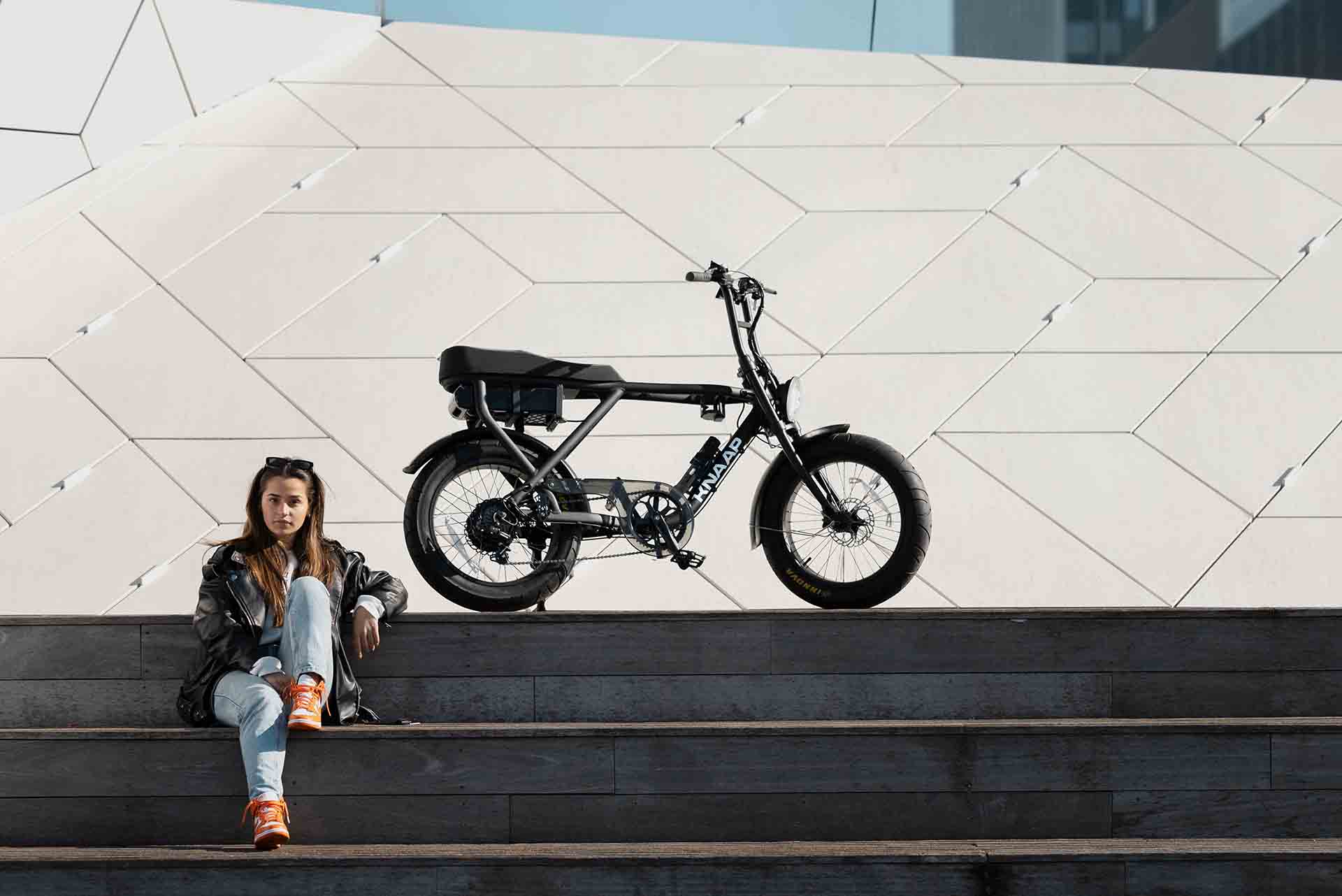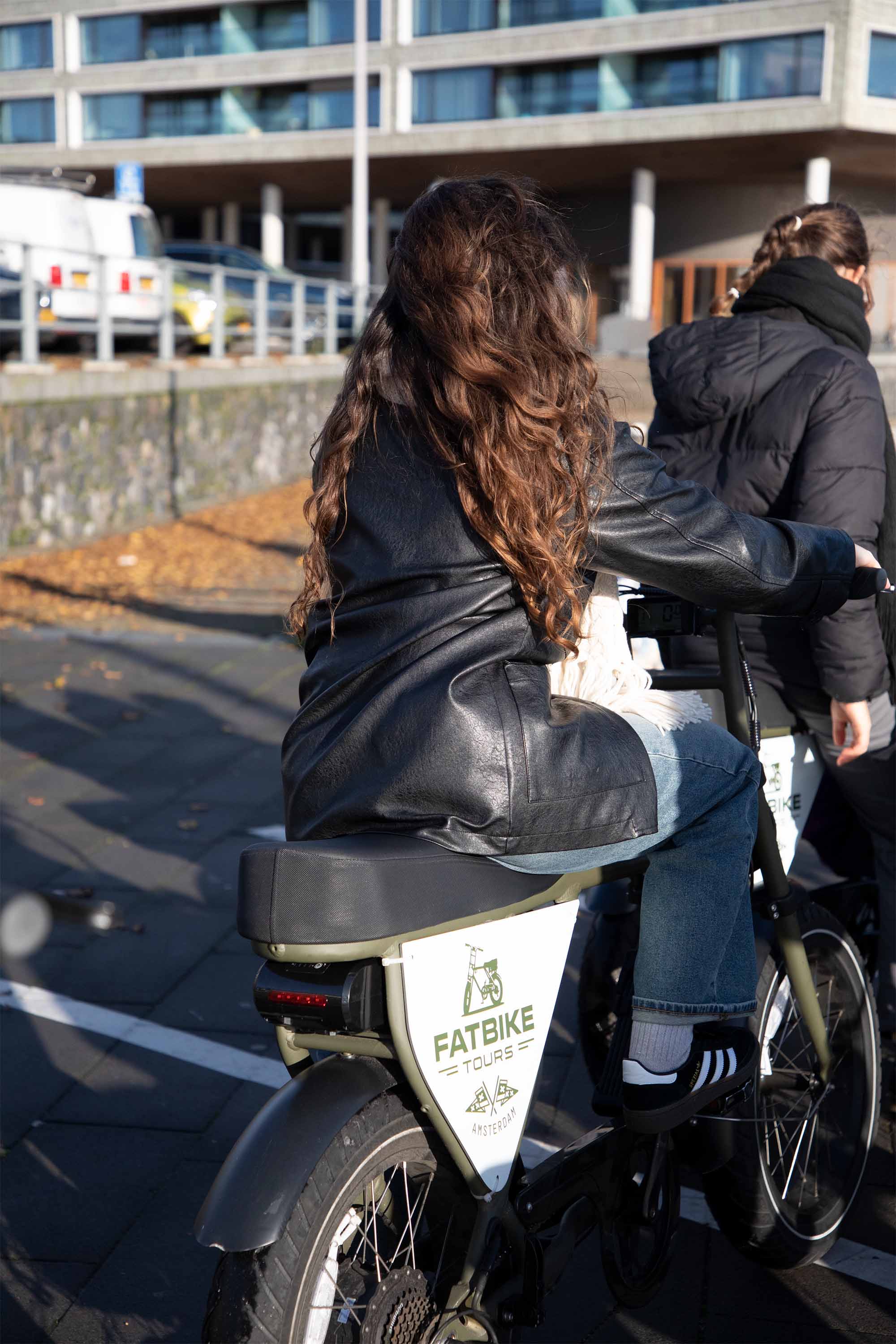Fatbikes in Amsterdam: what are the rules?
There is no escaping fatbikes that overtake you from all sides in Amsterdam these days. They look like scooters, sometimes go faster than e-bikes but are treated as regular bikes. What exactly are the rules for fatbikes in 2024?
What is a fatbike?

Fatbikes, with their fat tyres and tough looks, are becoming increasingly popular in Amsterdam. A fatbike is considered an electric bicycle (e-bike) according to Dutch law. The difference between normal e-bikes and fatbikes is in the, you guessed it, thickness of the tyres. Fatbikes must meet the following criteria:
- Maximum speed: 25 km/h (with pedal assistance)
- Power electric motor: 250 watts
- No registration requirement
- No driving licence obligation
- No helmet obligation (but recommended)
- You do not need to insure your own electric bike for third-party liability
Traffic safety is most important. If you ride a fatbike that does not comply with the above rules? Then you are not insured. In case of an accident, you pay for the damage and or medical expenses yourself.
Why choose a fatbike?
The thick tyres of a fatbike offer many advantages. They are better able to withstand bumps and unpaved roads. Although you won't encounter the latter much in the city. What is an important advantage is that the thick tyres cannot get stuck in the tram rails.
The thick tyres need to be inflated less often and last longer. The advantage of thin tyres is that they are lighter, so without pedal assistance, you need less power. That is less of an issue with an e-bike.
TU Delt has studied the grip of different bike tyres. The tyres of fatbikes can easily go over ledges, come back on the cycle path with ease if you tap the verge. The better grip makes you less likely to slip than with a regular bike.
 General traffic rules for bikes and e-bikes:
General traffic rules for bikes and e-bikes:
Fatbikes fall under the same traffic rules as regular e-bikes. This means they:
- Must ride on the cycle track.
- Must give way to pedestrians.
- Must adhere to the speed limit of 25 km/h.
- Cannot bike on the pavement and in pedestrian areas.
- Cyclists must indicate direction when changing direction. This can be done by extending a hand, but it can also be done by using light indicators.
- Never allowed to drive through a red light, even if the road seems clear. The fine is €110.
Do you have to wear a helmet on an e-bike or fatbike?
Currently, it is not mandatory to wear a helmet when you are biking on an electric bike. Because the laws for e-bikes are the same as those for a normal bike. However, it is strongly recommended. The impact of a fall at 25 kilometers per hour can already have serious consequences. Since 1 January 2023, there has been a helmet requirement for mopeds, which also reach a maximum speed of 25 kilometers per hour. As mopeds do require helmets, e-bikes may follow.
Cycling with a phone
It is forbidden to hold an electrical device while cycling. This can be a phone but also a music player. Calling is allowed, but hands-free. Listening to music is of course also allowed, preferably with headphones. It is not forbidden to play it out loud, but sadly not everyone can appreciatie your playlist.
If you need to use your phone, for example to see where you need to go, stand still for a moment. As long as you are not driving (cycling), you are allowed to hold your phone in your hand. If you start moving again, however slowly, you are driving and you may get a fine. If you get caught biking with a phone in your hand, you might hold a €150 fine next to it.
Putting your phone in a holder, is allowed. But since this can be distracting and therefor dangerous, you can also be fined for it.
Parking your bike in Amsterdam
Another important point is where to leave your bike safely and without it getting in the way of others. In the city at crowded places, bicycles should only be placed in bays, racks or stalls. The municipality has many public guarded bike racks, most of them are free for the first 24 hours of parking. We always recommend putting your bike in one of those!
Incorrectly parked bicycles are collected by the municipality and taken to the Fietsdepot. First, the bikes get one check to see if they are stolen. Thanks to this method, stolen bicycles are recovered daily.
 Keep in mind:
Keep in mind:
- Fatbikes are wider than regular bikes, remember this when passing other road users.
- Due to the wide wheels and the weight of the bike, braking power may be less than on a normal bike. So keep enough distance from the vehicle in front of you.
- Make sure your bike is well lit when it is dark. When the street lights are on, your bike lights should also be on.
- On a zebra crossing without traffic lights, crossing pedestrians always have priority. Even if you can drive around the pedestrians or pass just in front of them. Apart from being anti-social, you can also be fined for driving on.
Will the rules for e-bikes change?
The municipality of Amsterdam is working on plans to tighten the rules for fatbikes. This could mean a minimum age, licence plate and helmet requirement for fatbikes in the future. We do not know this yet, and will be following up if anything changes!
Bike without worries
Fatbikes are a fun and practical way to explore Amsterdam. Just make sure you are aware of the rules and follow the traffic regulations. That way, you'll enjoy your ride responsibly!
With a guided bike tour, you don't need to worry. Follow one of our experienced guides and head out. They will help you with the rules and tips!
